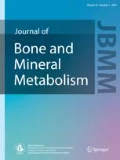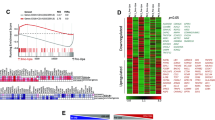Abstract
Rheumatoid arthritis (RA) is a multifactorial disease caused by genetic and environmental factors: however, precise molecular mechanisms underlying its pathogenesis remain largely unknown. Treatment of RA patients with disease-modifying biological agents occasionally promotes Mycobacterium tuberculosis infection or recurrence of M. tuberculosis, although how infection promotes arthritis has not been characterized. Here, we found that arthritis phenotypes in a collagen-induced mouse model were evident only when killed M. tuberculosis was co-administered. Treatment of cultured macrophages with killed M. tuberculosis promoted production of IL-6, a major inflammatory cytokine in RA patients, while similar treatment of TLR2-deficient macrophages failed to induce IL-6 expression. Arthritis scores, joint destruction, and serum IL-6 levels were all significantly ameliorated in TLR2-deficient compared with wild-type mice, even in animals treated with killed M. tuberculosis. These results suggest that M. tuberculosis infection enhances arthritis development and that TLR2 could serve as a therapeutic target for some forms of the disease.




Similar content being viewed by others
Abbreviations
- RA:
-
Rheumatoid arthritis
- TLRs:
-
Toll-like receptors
- CIA:
-
Collagen-induced arthritis
References
Symmons DP (2002) Epidemiology of rheumatoid arthritis: determinants of onset, persistence and outcome. Best Pract Res Clin Rheumatol 16:707–722
Louie GH, Ward MM (2010) Changes in the rates of joint surgery among patients with rheumatoid arthritis in California, 1983–2007. Ann Rheum Dis 69:868–871
da Silva E, Doran MF, Crowson CS, O’Fallon WM, Matteson EL (2003) Declining use of orthopedic surgery in patients with rheumatoid arthritis? Results of a long-term, population-based assessment. Arthritis Care Res 49:216–220
Tanaka E, Saito A, Kamitsuji S, Yamada T, Nakajima A, Taniguchi A, Hara M, Tomatsu T, Yamanaka H (2005) Impact of shoulder, elbow, and knee joint involvement on assessment of rheumatoid arthritis using the American College of Rheumatology Core Data Set. Arthritis Care Res 53:864–871
Kochi Y, Suzuki A, Yamada R, Yamamoto K (2010) Ethnogenetic heterogeneity of rheumatoid arthritis—implications for pathogenesis. Nat Rev Rheumatol 6:290–295
Vereecke L, Beyaert R, van Loo G (2011) Genetic relationships between A20/TNFAIP3, chronic inflammation and autoimmune disease. Biochem Soc Trans 39:1086–1091
Sugiyama D, Nishimura K, Tamaki K, Tsuji G, Nakazawa T, Morinobu A, Kumagai S (2010) Impact of smoking as a risk factor for developing rheumatoid arthritis: a meta-analysis of observational studies. Ann Rheum Dis 69:70–81
Alamanos Y, Drosos AA (2005) Epidemiology of adult rheumatoid arthritis. Autoimmun Rev 4:130–136
Smolen JS, Landewé R, Breedveld FC, Dougados M, Emery P et al (2010) EULAR recommendations for the management of rheumatoid arthritis with synthetic and biological disease-modifying antirheumatic drugs. Ann Rheum Dis 69:964–975
Saag KG, Teng GG, Patkar NM, Anuntiyo J, Finney C et al (2008) American College of Rheumatology 2008 recommendations for the use of non-biologic and biologic disease-modifying antirheumatic drugs in rheumatoid arthritis. Arthritis Rheum 59:762–784
Nam JL, Winthrop KL, van Vollenhoven RF, Pavelka K, Valesini G, Hensor EM, Worthy G, Landewé R, Smolen JS, Emery P, Buch MH (2010) Current evidence for the management of rheumatoid arthritis with biological disease-modifying antirheumatic drugs: a systematic literature review informing the EULAR recommendations for the management of RA. Ann Rheum Dis 69:976–986
Smolen JS, Aletaha D, Bijlsma JW, Breedveld FC, Boumpas D et al (2010) Treating rheumatoid arthritis to target: recommendations of an international task force. Ann Rheum Dis 69:631–637
Keane J, Gershon S, Wise RP, Mirabile-Levens E, Kasznica J, Schwieterman WD, Siegel JN, Braun MM (2001) Tuberculosis associated with infliximab, a tumor necrosis factor α-neutralizing agent. N Engl J Med 345:1098–1104
Takeuchi T, Tatsuki Y, Nogami Y, Ishiguro N, Tanaka Y, Yamanaka H, Kamatani N, Harigai M, Ryu J, Inoue K, Kondo H, Inokuma S, Ochi T, Koike T (2008) Postmarketing surveillance of the safety profile of infliximab in 5000 Japanese patients with rheumatoid arthritis. Ann Rheum Dis 67:189–194
Koike T, Harigai M, Inokuma S, Inoue K, Ishiguro N, Ryu J, Takeuchi T, Tanaka Y, Yamanaka H, Fujii K, Freundlich B, Suzukawa M (2009) Postmarketing surveillance of the safety and effectiveness of etanercept in Japan. J Rheumatol 36:898–906
Koike T, Harigai M, Inokuma S, Ishiguro N, Ryu J, Takeuchi T, Takei S, Tanaka Y, Ito K, Yamanaka H (2011) Postmarketing surveillance of tocilizumab for rheumatoid arthritis in Japan: interim analysis of 3881 patients. Ann Rheum Dis 70:2148–2151
Akira S, Uematsu S, Takeuchi O (2006) Pathogen recognition and innate immunity. Cell 124:783–801
Pierer M, Wagner U, Rossol M, Ibrahim S (2011) Toll-like receptor 4 is involved in inflammatory and joint destructive pathways in collagen-induced arthritis in DBA1J mice. PLoS One 6:e23539
Alzabin S, Kong P, Medghalchi M, Palfreeman A, Williams R, Sacre S (2012) Investigation of the role of endosomal Toll-like receptors in murine collagen-induced arthritis reveals a potential role for TLR7 in disease maintenance. Arthritis Res Ther 14:R142
Joosten LA, Koenders MI, Smeets RL, Heuvelmans-Jacobs M, Helsen MM, Takeda K, Akira S, Lubberts E, van de Loo FA, van den Berg WB (2003) Toll-like receptor 2 pathway drives streptococcal cell wall-induced joint inflammation: critical role of myeloid differentiation factor 88. J Immunol 171:6145–6153
Wang G, Ma Y, Buyuk A, McClain S, Weis JJ, Schwartz I (2004) Impaired host defense to infection and Toll-like receptor 2-independent killing of Borrelia burgdorferi clinical isolates in TLR2-deficient C3H/HeJ mice. FEMS Microbiol Lett 231:219–225
Frasnelli ME, Tarussio D, Chobaz-Péclat V, Busso N, So A (2005) TLR2 modulates inflammation in zymosan-induced arthritis in mice. Arthritis Res Ther 7:R370–R379
Rosenzweig HL, Jann MJ, Vance EE, Planck SR, Rosenbaum JT, Davey MP (2010) Nucleotide-binding oligomerization domain 2 and Toll-like receptor 2 function independently in a murine model of arthritis triggered by intraarticular peptidoglycan. Arthritis Rheum 62:1051–1059
Abdollahi-Roodsaz S, Joosten LA, Koenders MI, Devesa I, Roelofs MF, Radstake TR, Heuvelmans-Jacobs M, Akira S, Nicklin MJ, Ribeiro-Dias F, van den Berg WB (2008) Stimulation of TLR2 and TLR4 differentially skews the balance of T cells in a mouse model of arthritis. J Clin Invest 118:205–216
Abdollahi-Roodsaz S, Koenders MI, Walgreen B, Bolscher J, Helsen MM, van den Bersselaar LA, van Lent PL, van de Loo FA, van den Berg WB (2013) Toll-like receptor 2 controls acute immune complex-driven arthritis in mice by regulating the inhibitory Fcγ receptor IIB. Arthritis Rheum 65:2583–2593
Takeuchi O, Hoshino K, Kawai T, Sanjo H, Takada H, Ogawa T, Takeda K, Akira S (1999) Differential roles of TLR2 and TLR4 in recognition of Gram-negative and Gram-positive bacterial cell wall components. Immunity 11:443–451
Pettit AR, Ji H, von Stechow D, Müller R, Goldring SR, Choi Y, Benoist C, Gravallese EM (2001) TRANCE/RANKL knockout mice are protected from bone erosion in a serum transfer model of arthritis. Am J Pathol 159:1689–1699
Redlich K, Hayer S, Ricci R, David JP, Tohidast-Akrad M, Kollias G, Steiner G, Smolen JS, Wagner EF, Schett G (2002) Osteoclasts are essential for TNF-alpha-mediated joint destruction. J Clin Invest 110:1419–1427
Mori T, Miyamoto T, Yoshida H, Asakawa M, Kawasumi M, Kobayashi T, Morioka H, Chiba K, Toyama Y, Yoshimura A (2011) IL-1β and TNFα-initiated IL-6-STAT3 pathway is critical in mediating inflammatory cytokines and RANKL expression in inflammatory arthritis. Int Immunol 23:701–712
Jo EK, Yang CS, Choi CH, Harding CV (2007) Intracellular signalling cascades regulating innate immune responses to Mycobacteria: branching out from Toll-like receptors. Cell Microbiol 9:1087–1098
Stenger S, Modlin RL (2002) Control of Mycobacterium tuberculosis through mammalian toll-like receptors. Curr Opin Immunol 14:452–457
Zhang Y, Jiang T, Yang X, Xue Y, Wang C, Liu J, Zhang X, Chen Z, Zhao M, Li JC (2013) Toll-like receptor -1, -2, and -6 polymorphisms and pulmonary tuberculosis susceptibility: a systematic review and meta-analysis. PLoS One 14:e63357
Norbis L, Miotto P, Alagna R, Cirillo DM (2013) Tuberculosis: lights and shadows in the current diagnostic landscape. New Microbiol 36:111–120
Acknowledgments
T. Miyamoto was supported by a Grant-in-Aid for Scientific Research, from the Takeda Science Foundation, Japan.
Conflict of interest
None.
Author information
Authors and Affiliations
Corresponding author
Additional information
H. Kanagawa and Y. Niki contributed equally to this work.
About this article
Cite this article
Kanagawa, H., Niki, Y., Kobayashi, T. et al. Mycobacterium tuberculosis promotes arthritis development through toll-like receptor 2. J Bone Miner Metab 33, 135–141 (2015). https://doi.org/10.1007/s00774-014-0575-9
Received:
Accepted:
Published:
Issue Date:
DOI: https://doi.org/10.1007/s00774-014-0575-9




